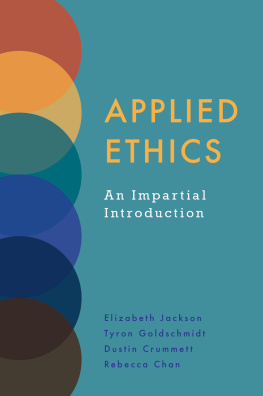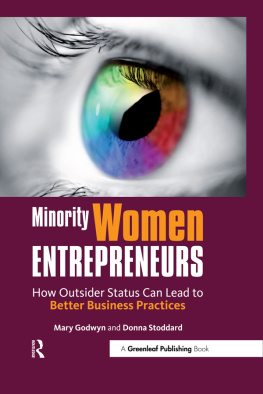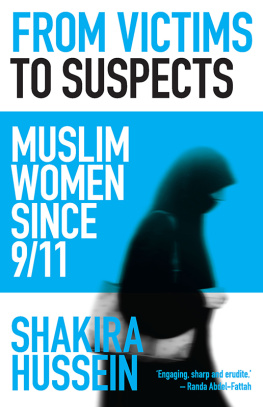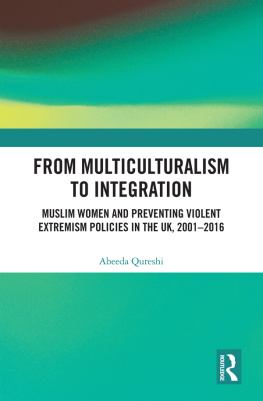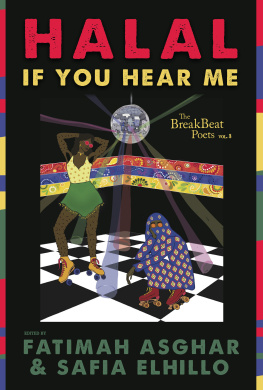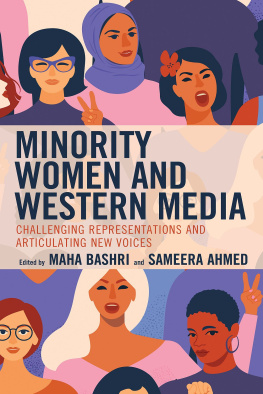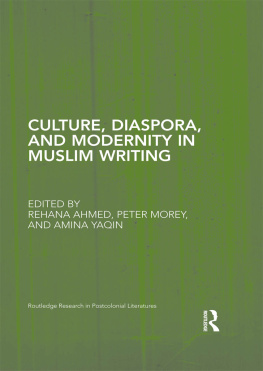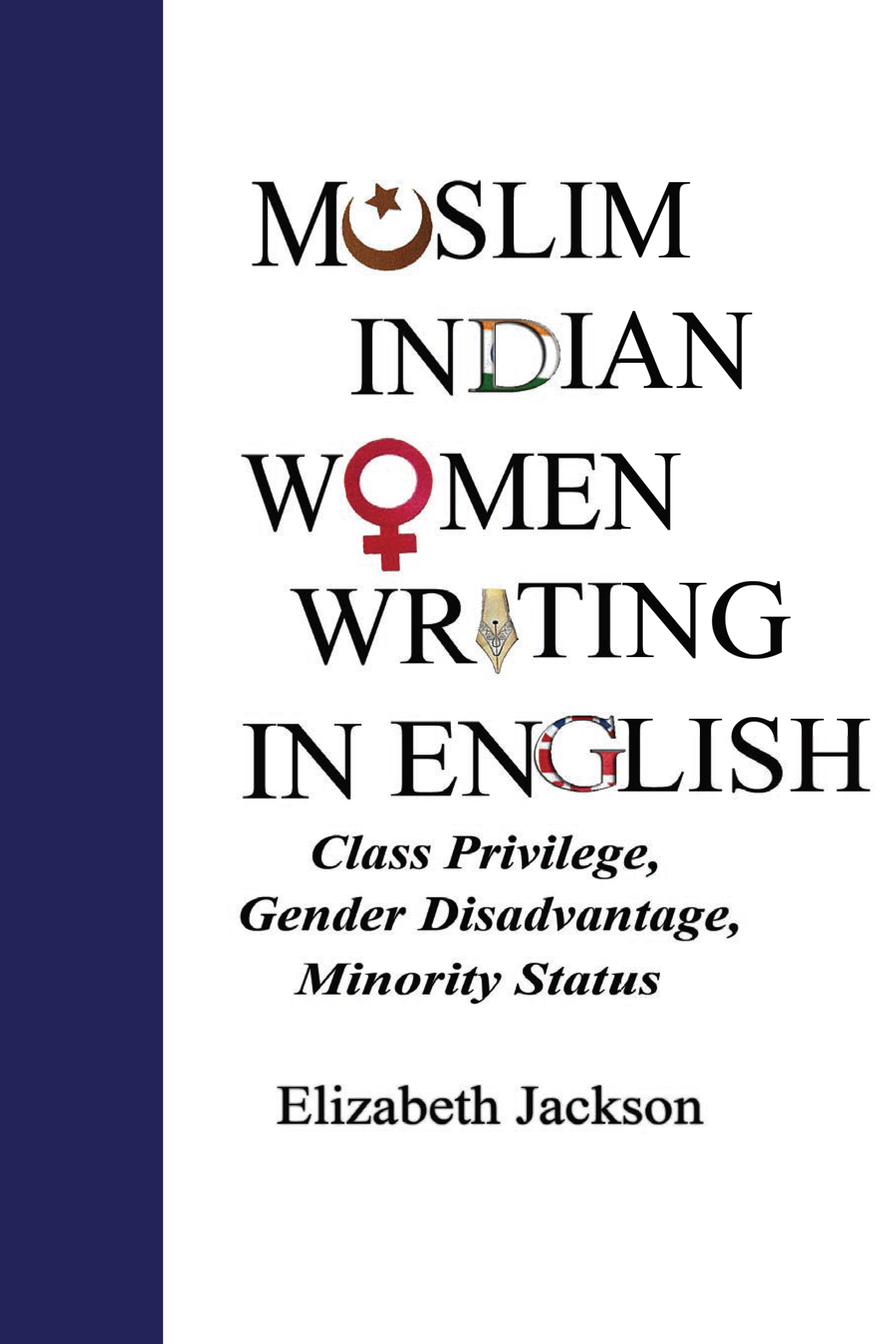A dvance praise for
Muslim Indian Women Writing in English
Muslim Indian Women Writing in English is an eagerly awaited and timely intervention into the relatively neglected area of Indian Anglophone writing by Muslim women writers. In her searching monograph, Elizabeth Jackson provides a comparative and developmental study of Indian Muslim womens fiction produced in the postcolonial era. She interrogates such pressing issues as gender and patriarchy, social class, and religious identity, as well as exploring aesthetic concerns regarding narrative strategies and form. Jackson highlights the authors conflicting yet constitutive positionality stemming from their privileged class position, subordinate gender identity, and religious minority status. Her incisive, well-written book should be required reading for students and scholars of Indian writing in English, feminism, and Muslim studies.
Claire Chambers, co-editor of the Journal of Commonwealth Literature
In loving memory of
Dr. Giselle Rampaul (19762017) and
Professor Bart Moore-Gilbert (19512015) v | vi vi | vii
I am deeply grateful to the people and institutions that made this book possible. They include my past and present students and colleagues at the University of the West Indies, who constantly inspire me with fresh ideas and perspectives. I have benefited from any number of illuminating conversations inside and outside of lectures, tutorials, seminars, and conferences. In terms of discussion of ideas and practical advice about this book, I am particularly grateful to my colleagues in Trinidad, including Savrina Chinien, Maarit Forde, Gabriel Hezekiah, David Mastey, Paula Morgan, Louis Regis, and Godfrey Steele, as well as my dear friend in London, Ayesha Ibrahim. Thanks are also due to the University of the West Indies for a semester of study leave to go abroad and complete my book, and particularly to Jeremy DeLisle for supporting my application for a grant through the Campus Research and Publication Fund. My semester in London was made more enjoyable and more productive by Lawrence Scott and Jenny Green, whose generous hospitality enabled easy access to the British Library, as well as by other friends and family members who provided encouragement and at times much-needed distraction from my book. ix | x
I gratefully acknowledge Palgrave Macmillan for permission to incorporate a section of reworked contextual material from my previously published book Feminism and Contemporary Indian Womens Writing (2010), as well as Sage Publications for permission to incorporate reworked material from my three previously published articles:
Gender and Social Class in India: Muslim Perspectives in the Fiction of Attia Hosain and Shama Futehally. Journal of Commonwealth Literature: Online First , 2016. DOI: 10.1177/0021989416632373
Celebration and Disillusionment in Contemporary India: Narrating the Muslim Wedding and Its Aftermath in Shama Futehallys Tara Lane and Samina Alis Madras on Rainy Days. Journal of Commonwealth Literature , vol. 48, no. 2, 2013, pp. 253267.
Gender and Communal Politics in Shama Futehallys Reaching Bombay Central . Journal of Commonwealth Literature , vol. 46, no. 3, 2011, pp. 475491.
Special thanks to Claire Chambers, co-editor of the Journal of Commonwealth Literature , who has offered valuable scholarly advice and encouragement of this project throughout its development, and to Usha Iyer, who kindly read the manuscript during a particularly busy time in her own career. Thanks also to Meagan Simpson, Michael Doub, Mary Egan, Jackie Pavlovic, and Luke McCord at Peter Lang for their unfailing professionalism, efficiency, and courtesy at every stage of the publication process.
Finally, I would like to thank my family and friends, whose encouragement and support kept me going. The list is too long to enumerate here, but I would like to single out my husband Greg Fitzgerald, who has always read each draft chapter with genuine interest. Our children Mary, Tom, and Rebecca have also helped with ideas, advice, and inspiration. Last but not least, kudos to my father-in-law Jerry Fitzgerald for his beautiful cover design, and to Roger McFarlane for his collaboration in its production. x | 1
This book is a study of the literary fiction of the four best-known Muslim Indian women writing in English during the postcolonial period: Attia Hosain (19131998), Zeenuth Futehally (19041992), Shama Futehally (no relation, 19522004) and Samina Ali (b. 1969). The earliest work to be analysed is Zeenuth Futehallys only published novel, Zohra (1951), and the best known is Attia Hosains classic novel Sunlight on a Broken Column (1961). These works are discussed along with Attia Hosains collection of short stories, Phoenix Fled and Other Stories (1953). The later works are Shama Futehallys two novels Tara Lane (1993) and Reaching Bombay Central (2002), her short story collection Frontiers: Collected Stories (2006a), and Samina Alis novel Madras on Rainy Days (2004).
Numerous Indian women writing in English have achieved commercial success and critical appreciation during the postcolonial era, including Kamala Markandaya, Nayantara Sahgal, Shashi Deshpande, Arundhati Roy, Anita Desai, and her daughter Kiran Desai. However, so few prominent anglophone Indian women authors have been from among the Muslim minority that it is perhaps premature to speak of a tradition of literature in English by Muslim women in India. One of 1 | 2 the reasons for this is that Muslim women writing in English are in a somewhat exceptional position in India. Recent statistical studies have shown that Muslims, who currently comprise approximately 13% of the population of India, continue to be generally poor and disadvantaged compared to other groups (Hasan and Menon 2004). Obviously this economic disadvantage does not apply to all Muslim families in India, but it is notable that there are proportionately fewer Muslim women than Hindu women writing in English. While there are many fine female writers of Urdu fiction, including Zakia Mashhadi and Ismat Chugtai, a Muslim Indian woman writing in English would almost certainly be from among a tiny privileged minority whose families are wealthy enoughand liberal enoughto provide an elite Western education for their daughter(s). This is certainly the case with Zeenuth Futehally, Attia Hosain, Shama Futehally, and Samina Ali, who in this respect have much in common with their Hindu counterparts such as Nayantara Sahgal, Anita Desai, and Shashi Deshpande.
Not wishing to make facile generalizations about these authors based on their religious identity, I nevertheless contend that as elite Muslim women in India, their literary vision is influenced by their paradoxical position of class privilege, gender disadvantage, and minority status. This paradox also applies to the protagonists in their novels, all of whom are women from the same social background as themselves. Accordingly, there are recurring thematic concerns central to the fiction of all four writers, each of which forms a chapter in this book: Religion and Communal Identity; Marriage and Sexuality; Gender and Social Class; and Responding to Patriarchy. The first chapter, Form and Narrative Strategy, provides an initial framework by examining the literary techniques of each writer.
Historical Context on Feminism in India
The concept of feminism has been controversial in India and other developing nations for a number of reasons. On the one hand, traditionalists argue that it alienates women from their culture, religion, and family responsibilities; while some on the left see it as a diversion from the 2 | 3 more important class struggle or the struggle against Western cultural and economic imperialism. Underlying both views is the assumption that feminism is an essentially Western ideology, and as Ania Loomba has pointed out, feminists in India are invariably chastised for being influenced by Western modes of thought:


